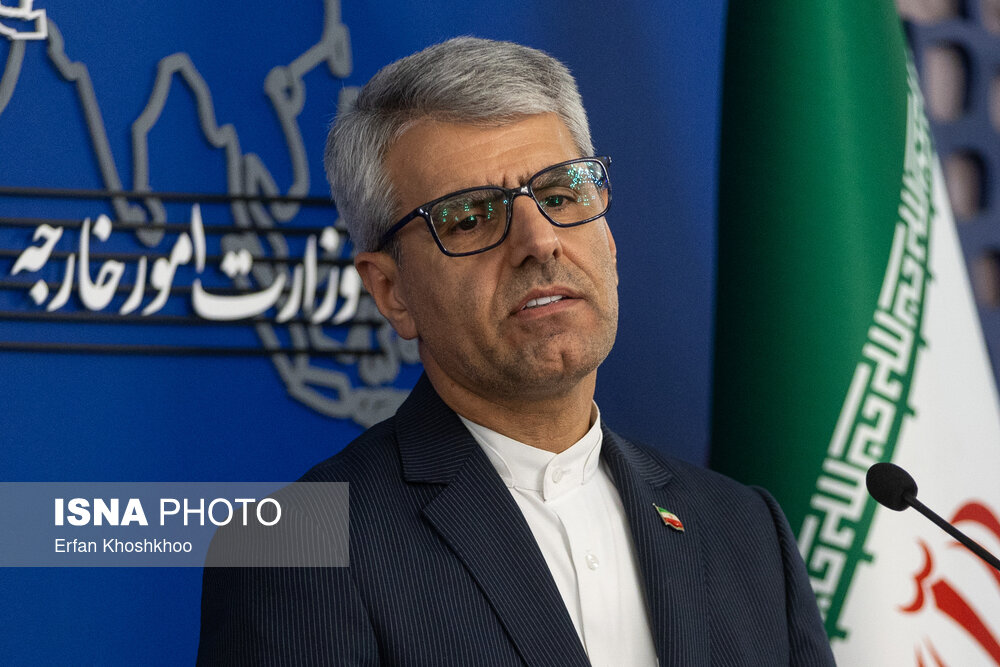ARTICLE AD BOX
IRAN says it might reassess its stance on nuclear weapons in an apparent threat to build an atomic bomb amid soaring tensions with Israel.
The country warned it may pursue a nuclear weapon – and use it to carry out revenge – if Israel strikes at its nuclear facilities.
 Rex
Rex Iran says it could review its ‘nuclear doctrine’ in an apparent threat to build an atomic bomb if it is attacked by Israel; picture is a file image
Iran says it could review its ‘nuclear doctrine’ in an apparent threat to build an atomic bomb if it is attacked by Israel; picture is a file image Iran has a number of nuclear sites, some buried underground; pictured is Isfahan power plant
Iran has a number of nuclear sites, some buried underground; pictured is Isfahan power plant Reuters
ReutersIsraeli officials have promised to respond to Iran’s unprecedented attacks on Israel launched at the weekend, which followed the Israeli military’s suspected air strike on Tehran’s consulate in Syria.
A senior commander of Iran’s feared Islamic Revolutionary Guard Corps (IRGC) said on Thursday that Israeli threats against Iran‘s nuclear facilities could lead Iran to review its “nuclear doctrine”.
Iran has always maintained its nuclear program is strictly for peaceful purposes – but the country is considered to be on the “threshold” of becoming a nuclear power.
Experts say Iran is capable of building a nuclear bomb from one of its “covert” sites in as little as six months.
Ahmad Haghtalab, the commander of the IRGC unit responsible for protecting Iran’s nuclear sites, said Israel’s threats “against Iran’s nuclear facilities make it possible to revise and deviate from the declared nuclear policies and considerations,” Tasnim reports.
Iran said after launching more than 300 drones, rockets, and missiles at Israel – most of which were intercepted, according to Israeli military – that its attack had been “completely successful”.
But Israel has vowed to respond, with airstrikes against Iran’s nuclear sites a potential option for retaliation.
Haghtalab said: “Through passive defence measures, highly advanced facilities and equipment, as well as the dispersion of our country’s nuclear facilities across Iran’s vast territory, we are ready to face any threat from [Israel].”
The IRGC commander warned that an Israeli attack on Iran’s nuclear facilities would be met with an Iranian strike on Israel’s nuclear sites, insisting “our fingers are on the trigger of firing strong missiles to destroy the designated targets”.
He added : “If [Israel] wants to take action against our nuclear facilities, we will respond by attacking its nuclear sites using advanced weaponry.”
Haghtalab’s chilling warning comes after senior ex-Mossad official Zohar Palti said Israel was considering striking Iran’s nuclear facilities as a retaliation option following Iran’s missile and drone attack.
Iran’s formidable Supreme Leader Ali Khamenei has rapidly expanded his country’s nuclear program in recent years.
Nuclear weapons expert Kelsey Davenport warned that Iran is now “sitting on the threshold of nuclear weapons” and “can build a bomb more quickly than at any point in its history“.
She said Tehran could have enough weapons-grade uranium for a nuclear bomb in as little as six months.
Ms Davenport estimated Iran would need less than a week to build an explosive device and could produce five or six in just a month from its “covert, undeclared sites” – which include a secretive underground lab currently under development near Iran’s Zagros Mountains.

 Reuters
Reuters Israel’s anti-missile system is employed after Iran’s drone and missile attack
Israel’s anti-missile system is employed after Iran’s drone and missile attack Rex
RexIran's Nuclear Sites

IRAN, a formidable and dangerous world power, is home to a number of nuclear sites.
It is thought to have active nuclear sites, research reactors and uranium mines.
Arak plant – satellite pictures of this plant near the Iranian town of Arak surfaced over 20 years ago.
It contains a heavy-water reactor with plutonium that can be used for nuclear bombs.
Bushehr nuclear power station – this power plant is a combination of Russian and German engineering.
It’s nuclear reactor is operating at 100% power and the site is home to enriched uranium, used for nuclear bombs.
Gachin uranium mine – home to uranium ore concentrate, or yellowcake, which can be transformed into enriched uranium ready for nuke bomb assembling.
Isfahan conversion plant – yellowcake is converted here into three dangerous substances.
Hexafluoride gase used in the enrichment process, uranium oxide used to fuel reactors and metal used in the cores of nuclear bombs.
Natanz uranium enrichment plant – this is Iran’s largest enrichment base.
It’s made up of three underground buildings and is closely watched by the international community.
Parchin military site – south of Tehran, this site is focused on research and the production of ammo, rockets and explosives.
Concerns have been raised that it is also used as part of Iran’s nuclear weapon development.
Qom uranium enrichment plant – a heavily fortified and initially secret facility where Iran carries out uranium enrichment.
.png)
 7 months ago
2
7 months ago
2








 English (US)
English (US)